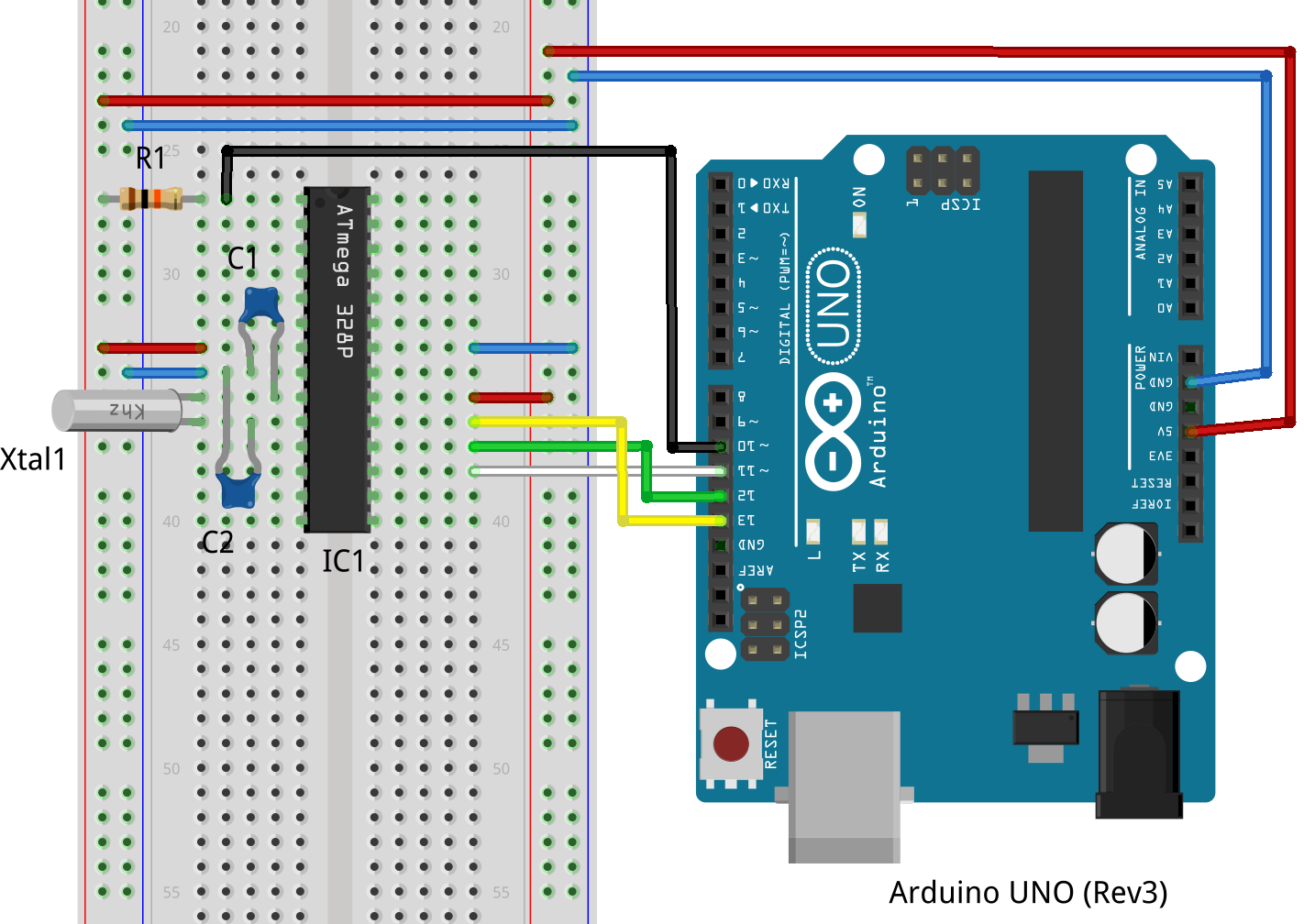always know where your towel is
Array Syntax:
myArray[][3] = {{1, 2, 3},
{4, 5, 6}};
Bit Shifting - Basic Syntax: 16 << 2 = 64
Bit Shifting - Shifting Right & Sign Extension:
int x = -16; // binary: 1111111111110000
int y = x >> 3; // binary: 1111111111111110
Bit Math
& | ! ^ (And, Or, Not, Xor)
Bit Masking (&):
byte x = 5 = 0b00000101
byte y = x & 0b00000011 = 0b00000001
Turning Bit On (|):
byte x = 5 = 0b00000101
byte x = x | 0b00000011 = 0b00000111
Data Types
All literals (constants) are assumed to be signed integers:
1. if entered without a decimal (1.0 is a float)
2. if not explicitly specified (1UL is an unsigned long)
If the math performed involves a float, then floating-point math will be performed.
Otherwise math is performed in the domain of the first rside OPERATION (see operation precidence).
See The Bald Engineer
Direct Port Register Manipulation -Guide-
Timer Registers -Guide- | -Cheat Sheet-
Pinouts -ATMega328- | -ATTiny85-
ATMega328:
| Timer | Size | Base frequency | Affected functions |
|---|---|---|---|
| 0 | 8-bit | 62500 | millis, micros, delay |
| 1 | 16-bit | 31372.55 | Servo library |
| 2 | 8-bit | 62500 | Tone |
ATTiny85:
| Timer | Size | Affected Functions |
|---|---|---|
| 0 |
Configuring Timers:
| Bit | 8 | 7 | 6 | 5 | 4 | 3 | 2 | 1 |
|---|---|---|---|---|---|---|---|---|
| TCCRxA | COM, 1A1, RW | COM, 1A0, RW | COM, 1B1, RW | COM, 1B0, RW | R | WG, M11, RW | WG, A10, RW | |
| TCCRxB | 1CNC 1 RW | 1CES, 1, RW | R | WG, M13, RW | WG, M12, RW | CS12, RW | CS11, RW | CS10, RW |
For PWM freq adjustment, set timer's base frequency divided by prescaler.
| CS12 | CS11 | CS10 | Prescaler |
|---|---|---|---|
| 0 | 0 | 0 | No Clock (default) |
| 0 | 0 | 1 | /1 (fastest) |
| 0 | 1 | 0 | /8 |
| 0 | 1 | 1 | /64 |
| 1 | 0 | 0 | /256 |
| 1 | 0 | 1 | /1024 (slowest) |
| 1 | 1 | 0 | Ext clock T1 pin - falling |
| 1 | 1 | 1 | Ext clock T1 pin - rising |
Initializing timers:
cli;
TCCRxA = 0;
TCCRxB = 0;
TIMSKx |= 1<
TCNT1 = startTime;
sei();
Board Manager URL's (separated by comma):
ATTiny: https://raw.githubusercontent.com/damellis/attiny/ide-1.6.x-boards-manager/package_damellis_attiny_index.json
ESP8266: http://arduino.esp8266.com/stable/package_esp8266com_index.json
Arduino as ISP --> ATMega328: homeautomation.org

Programming Bootloaded ATMega328 w/ FTDI: gammon.com.au
NOTES: Both Lilypad and Uno bootloaders are confirmed to work.
Adafruit FTDI cable has 5V supply and 3V logic - One or the other MUST be shifted.
Programmer: Select AVRISP mkII | Board: Lilypad Arduino or Arduino Uno
When changing from internal to external oscillator bootloader, don't forget to add the external oscillator.